Our customers





The problem
Assets stay in use for decades – but their lifecycle data around maintenance and operation is fragmented, outdated, or undocumented.
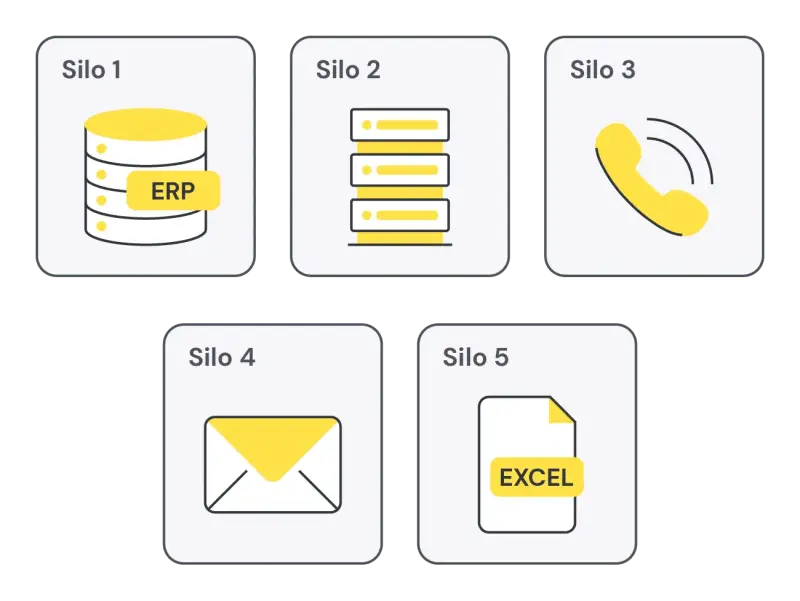
Before
- No transparency: Information is scattered across ERP systems, file servers, Excel sheets, sticky notes, and emails – making it hard to get a clear overview.
- Incomplete: Many tasks go undocumented – especially ad-hoc fixes or work done by external service providers.
- Error-prone: Data gets lost or outdated because no one knows what was done last.
- Time-consuming: Analyzing breakdowns or preparing for audits takes hours – just to gather the right info.
- Not future-ready: Paper-based workflows and Excel aren’t built for modern, AI-powered maintenance.
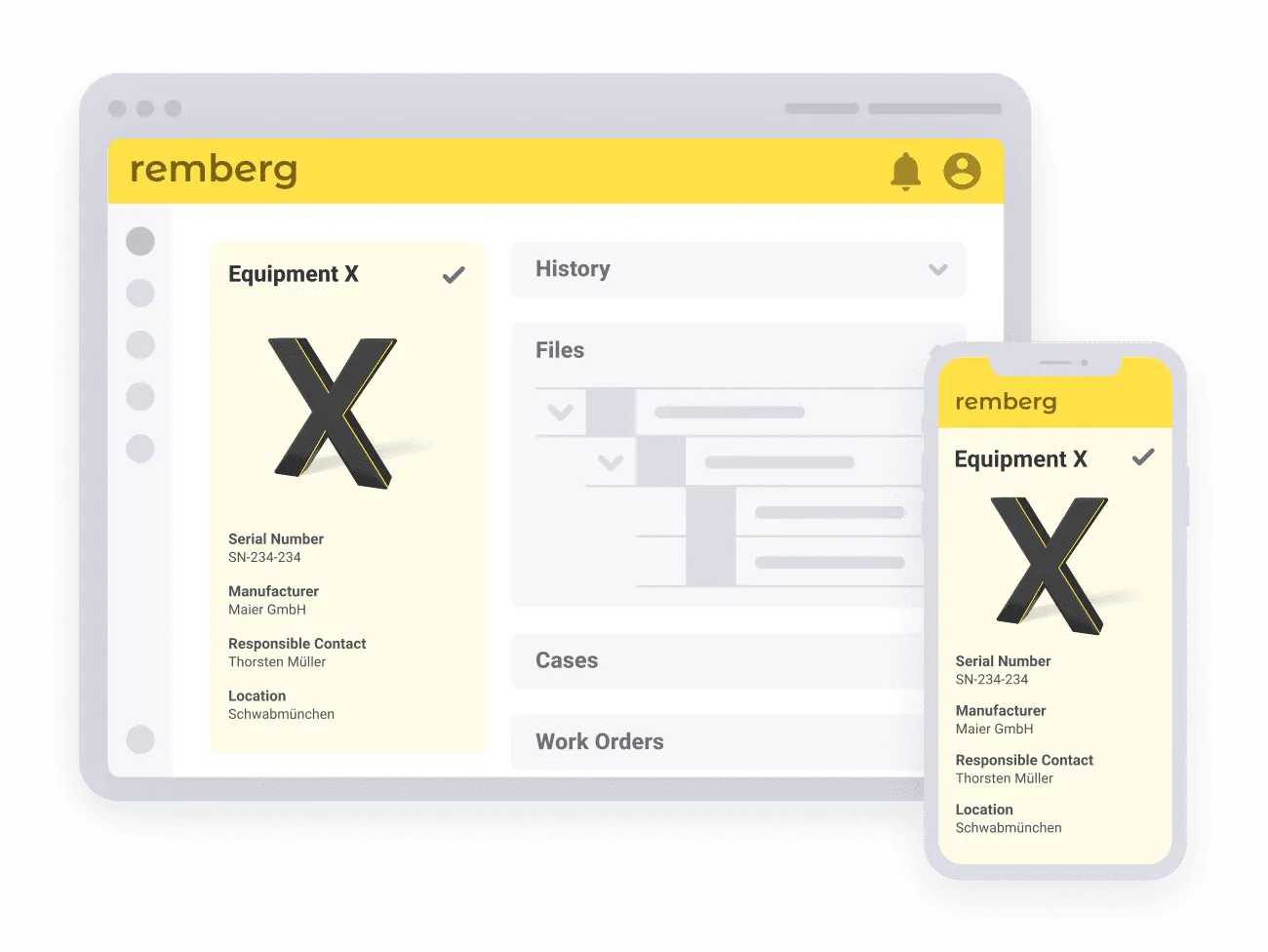
After
- Transparent: All asset info is centralized, searchable, and accessible via app or desktop – always linked to the right asset.
- Complete: Every action is logged – from maintenance and repairs to inspections and replacements, even by external partners.
- Traceable: Instantly see what was done, by whom, when, and why – with all reports, checklists, and notes in one place.
- Time-saving: Stop wasting time searching. Find everything in seconds – for audits, shift handovers, or troubleshooting.
- Future-proof: Digital workflows instead of Excel and paper – supported by the remberg AI Copilot
Build a complete digital history of your assets
With remberg, every maintenance task, incidents, and inspections are automatically recorded and linked to the right asset. Work orders, checklists, and documents all flow into one central system.
Over time, you create a searchable, audit-ready knowledge base your whole team can rely on.
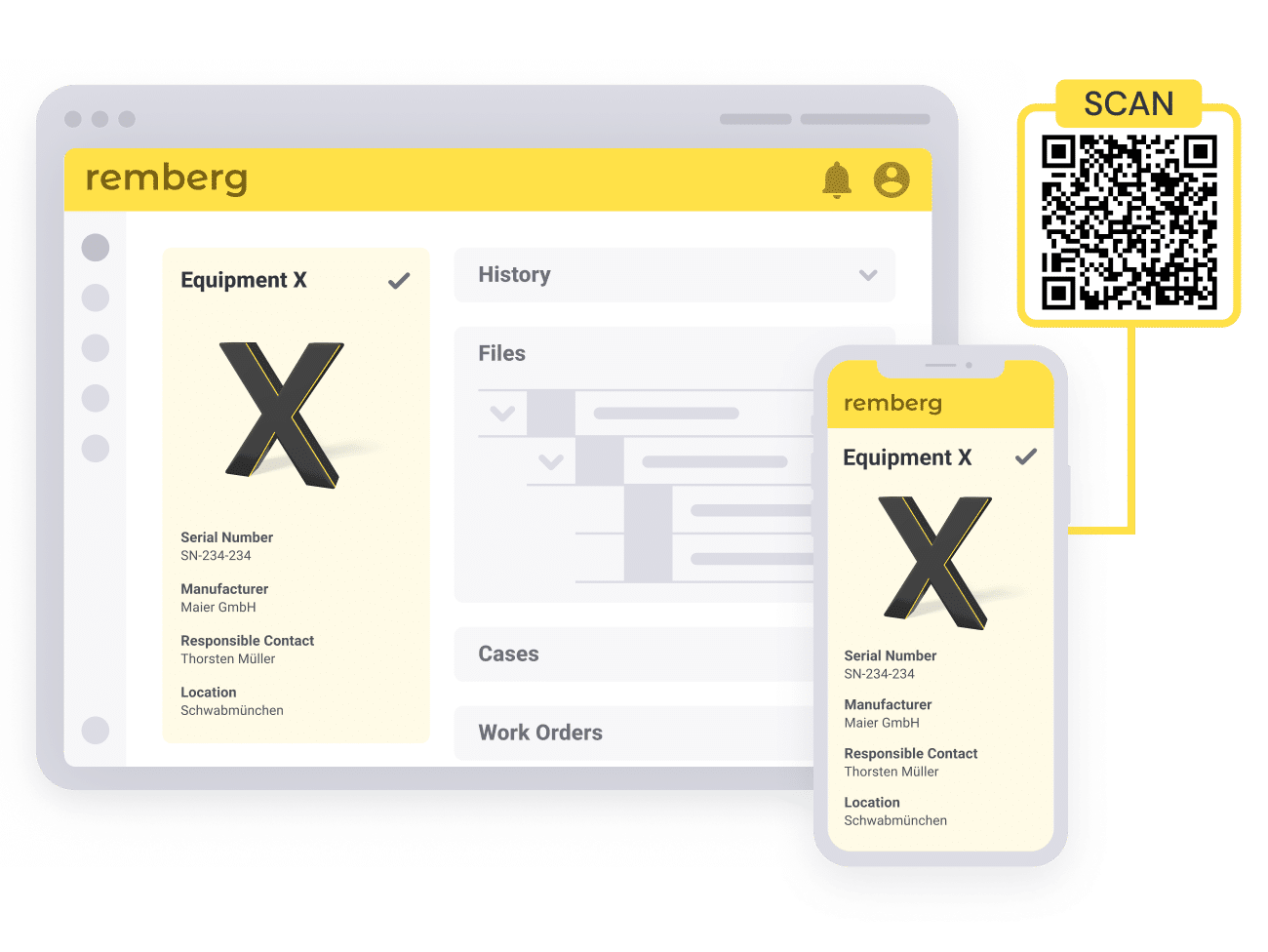
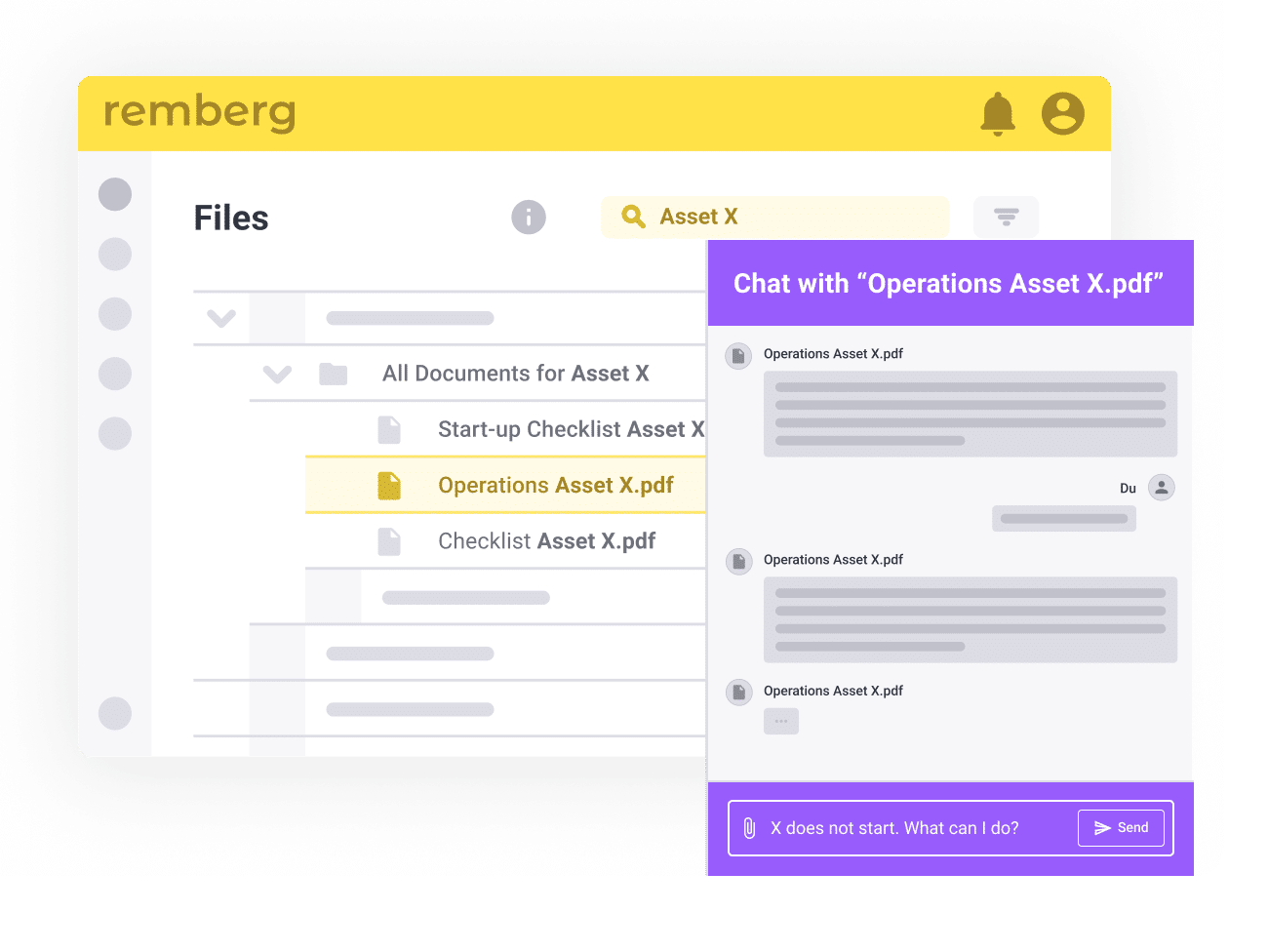
Get answers in seconds – wherever you are
Whether you're in a production site, at your desk, or right next to the machine – remberg gives you instant access to everything you need. The remberg AI Copilot scans past reports, technical docs, and asset data to deliver accurate, fact-based answers – always linked to the right asset. No delays. No guesswork. Just answers - exactly when you need them.
Sync all your data across systems
Easily connect the remberg maintenance software with your existing ERP, DMS, or PDM systems. Standardized interfaces ensure your asset data stays in sync – continuously and automatically. This creates a single source of truth, enabling more efficient processes and better, data-driven decisions.
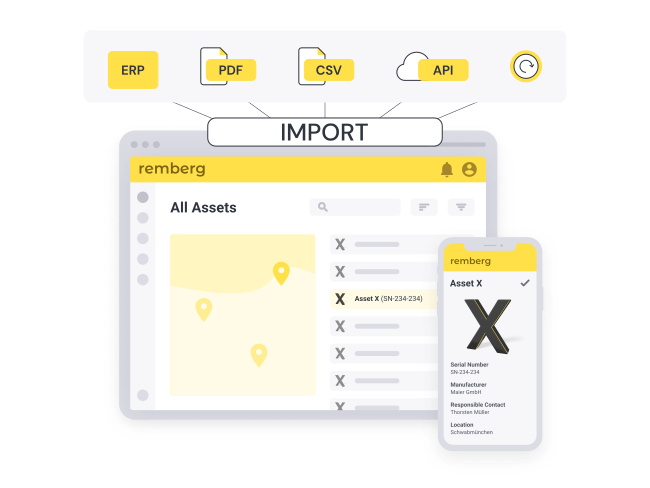
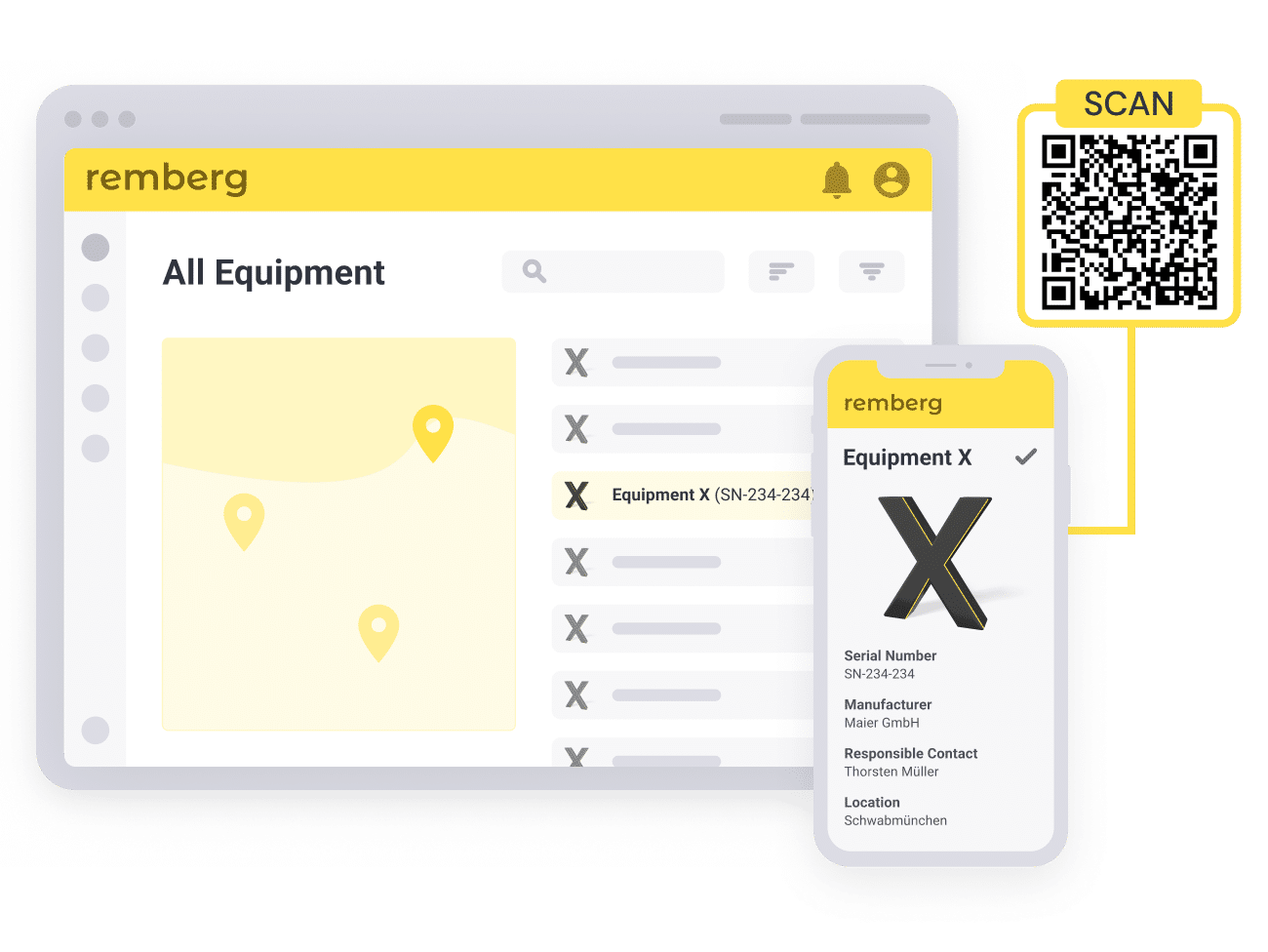
Keep critical knowledge – even when your team changes
When team members leave or retire, valuable know-how often disappears with them. With remberg, every task is documented and linked to the asset – so your team’s experience stays accessible, no matter who’s on shift.
Be audit-ready – without the stress
Maintenance audits or supplier checks can be a nightmare when documentation is missing or hard to find. With remberg, every inspection, task, and repair is fully documented – audit-proof, instantly accessible, and linked to the right asset.
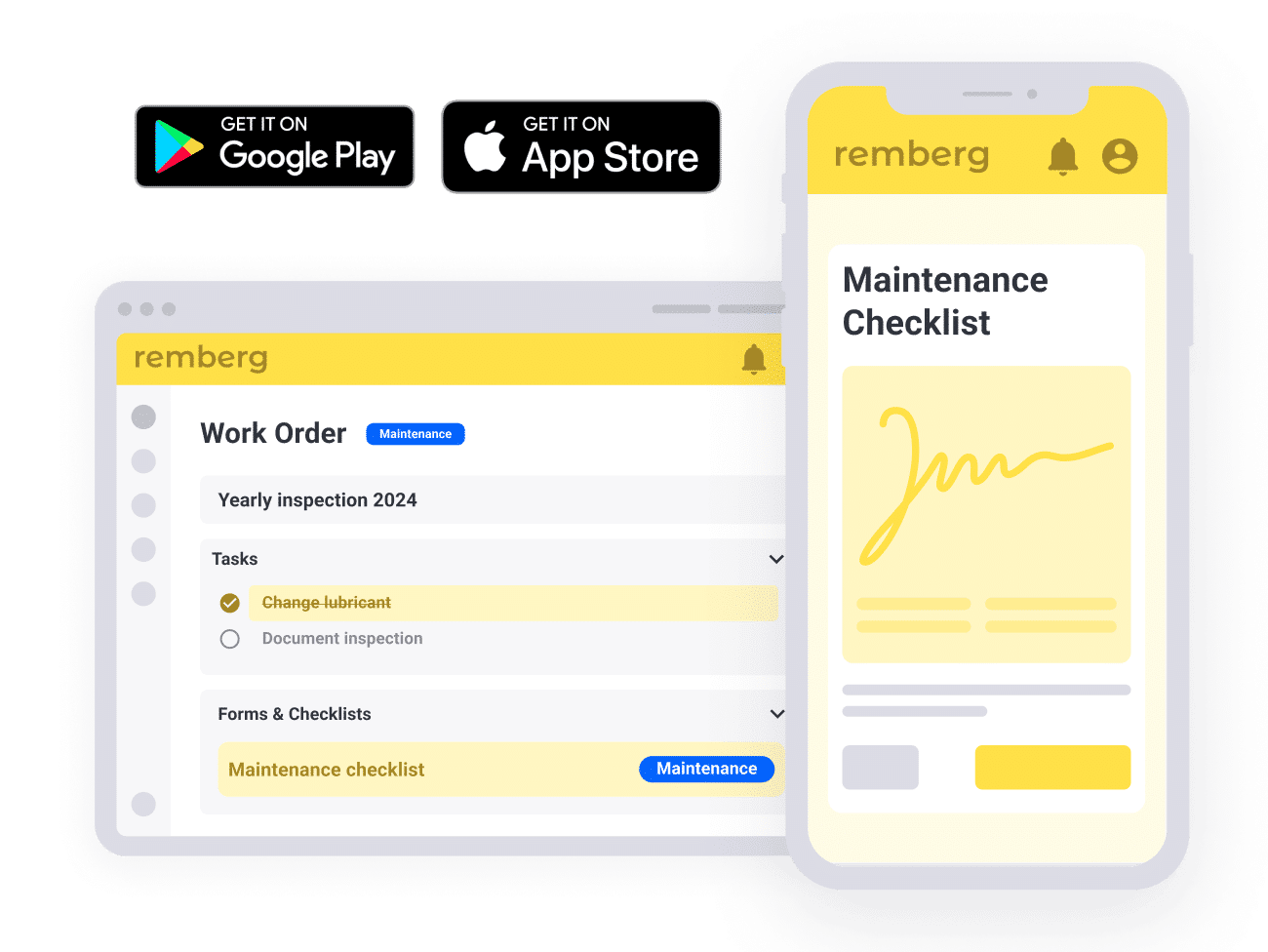
.png)
Connect your IT systems through Interfaces & APIs
remberg can be connected to all common ERP or MES systems to enable a mobile, AI-powered user experience for maintenance teams. Find out more about our documented interfaces in our remberg developer portal.
Trust in world-class data protection & IT security
Your data and your trust are our top priority. For hosting, the remberg software relies on a German high-security data center that is ISO/IEC 27001 certified and meets the highest C5 standards of the German Federal Office for Information Security (BSI). Additionally remberg provides security mechanisms such as password change cycles and 2FA.
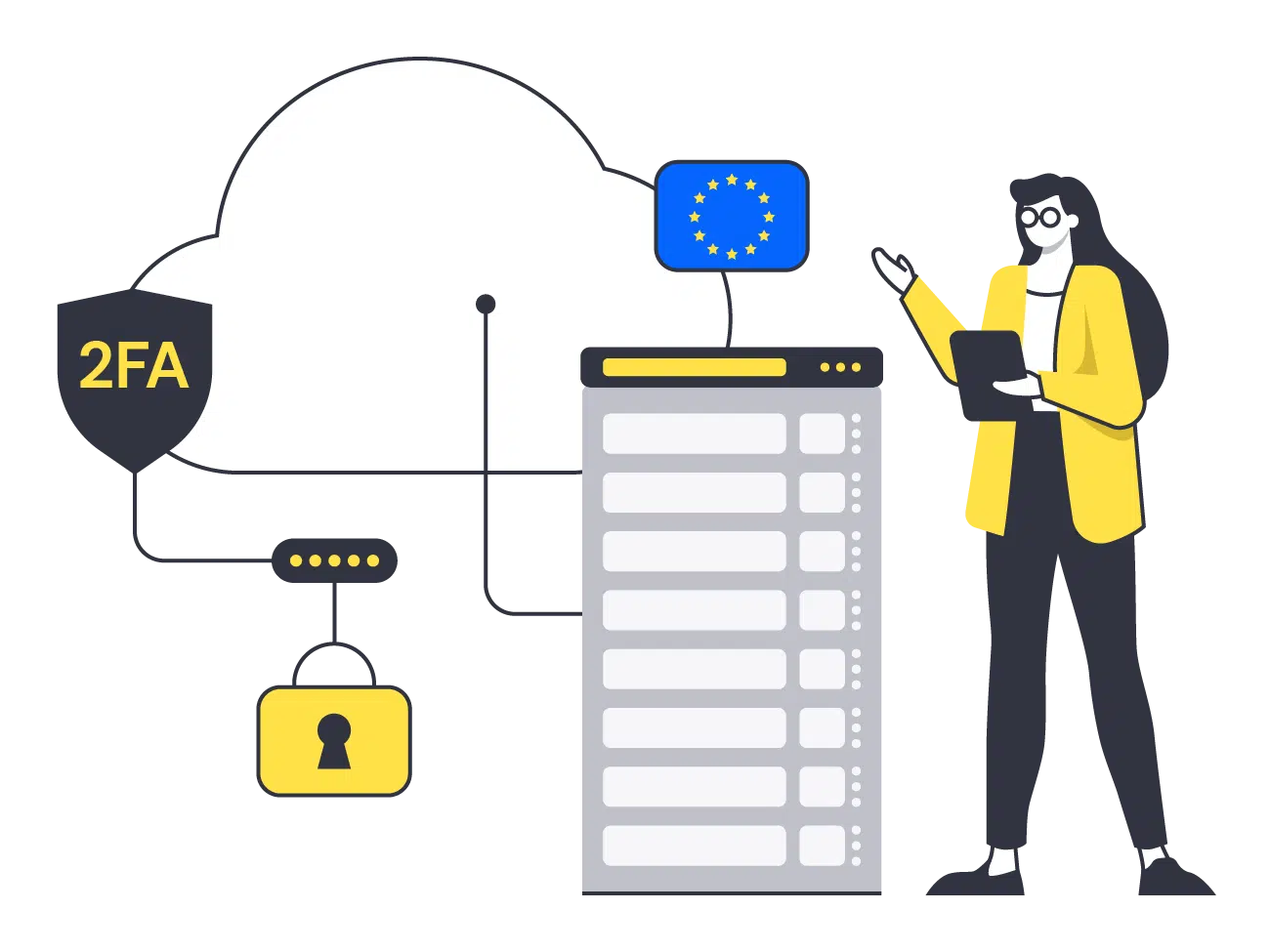
Our customers
Unlock the Full Potential of Your Assets, Equipment & Facilities
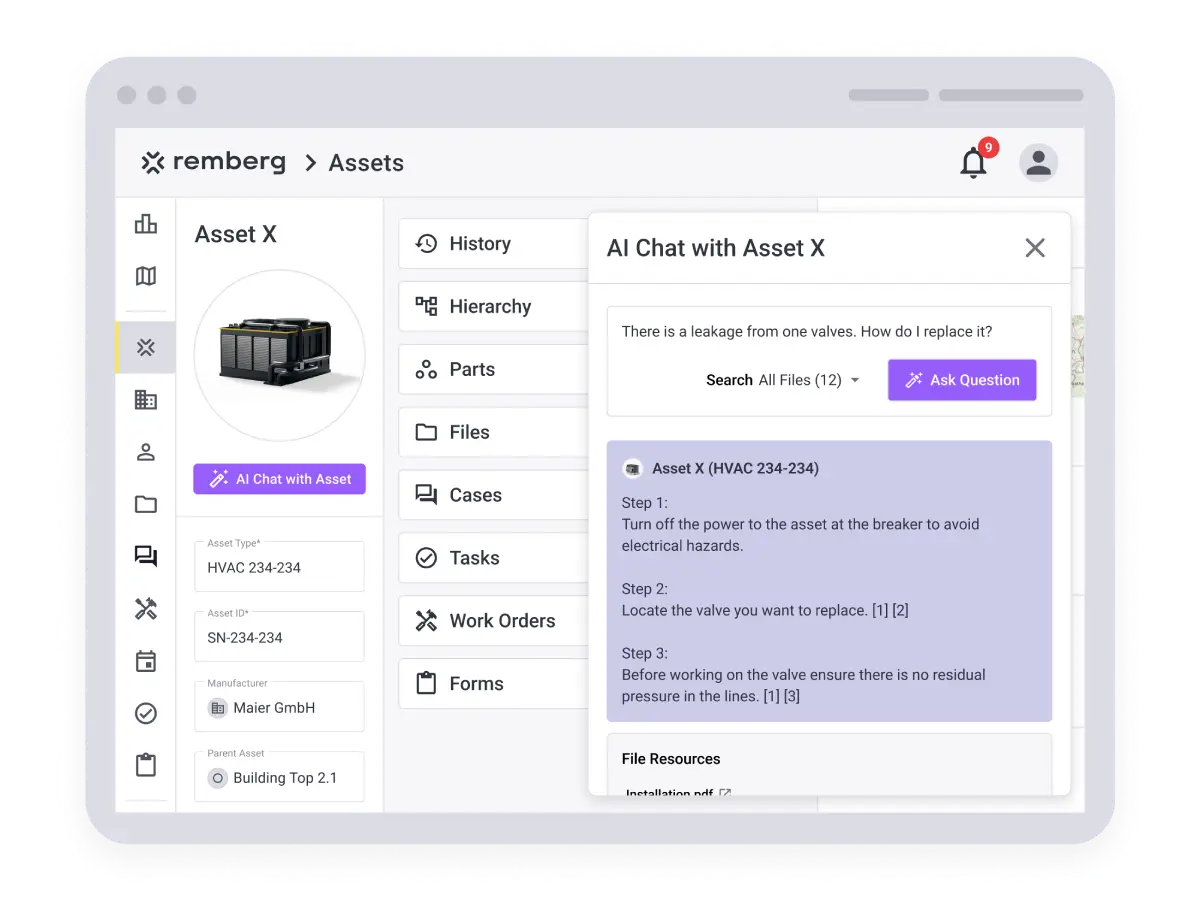
Newsletter
Inspiring content, trends & news.



















